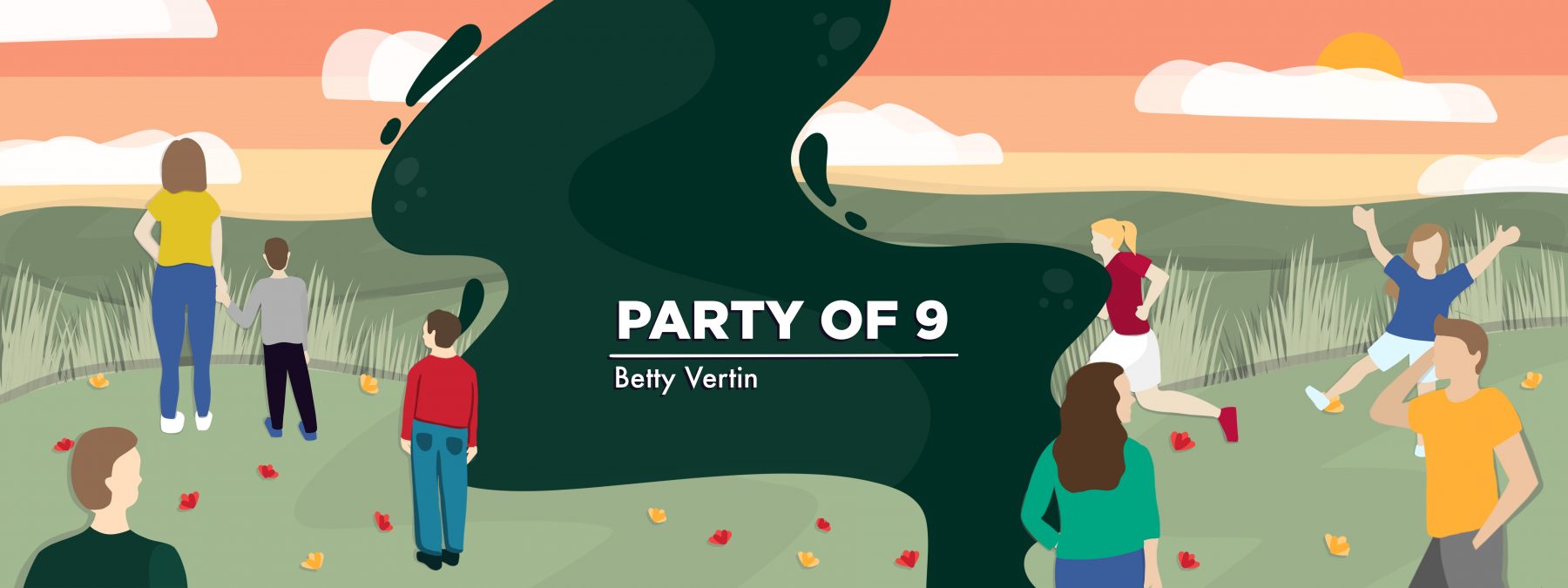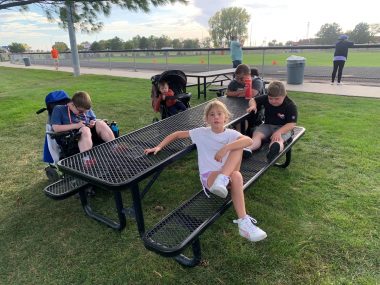Finding Accessible and Companion Seating With Multiple Wheelchairs Is Tricky
Columnist Betty Vertin shares what it's like attending events with three wheelchair users

My family enjoys attending sports events and theater productions. There aren’t many things we like more than a nice meal out followed by a game or a play. However, seating for families with wheelchair users is rarely ideal.
I can only speak about my family’s experiences. I have three sons with Duchenne muscular dystrophy (DMD), which causes loss of ambulation over time. One son, Rowen, 13, uses a power chair full time. Max, 16, uses a power chair outside our home, and although he sometimes will walk into a venue, he usually takes his power chair. My youngest son, Charlie, 11, uses a mobility scooter about half of the time and then walks the rest.
When we go out, we may have up to three wheelchairs with us. So some experiences regarding a lack of wheelchair and companion seating are because of how many chairs we take.
Planning is key
As a family, we discuss who will be taking which chair, and we plan for individual venues before leaving the house. It helps to have a plan in advance rather than showing up and trying to figure it out on the spot. We ask many questions about where we are going before we get there.
Following are some of the challenges we face when looking for seats when we are out for an evening.
1. Most bleachers or auditoriums have cutouts, or areas for wheelchairs, that are big enough only for two wheelchairs. As you can imagine, we must get creative when we have three. If a venue has more than one area for wheelchair users to park, we split up. Some of us sit with two of the boys, and some sit with the other one.
However, we often encounter venues with only one space reserved for wheelchairs. When this happens, the boys must park their chairs in aisles or other areas where they can fit. The rest of us are lucky if we can find seats nearby. If we are outdoors at a game or a concert, it is sometimes easier to sit in the grass instead of on the bleachers.
2. When we sit in bleachers with cutouts, they are always in the front row. If the bleachers are above ground, like at an outdoor football stadium, fencing and handrails often sit at eye level with the wheelchair users, obstructing their view. Our two oldest boys with power chairs can raise their chairs, which helps.

The Vertin family, sitting outdoors at a football game. (Courtesy of Betty Vertin)
3. People often misuse companion seating, particularly at movie theaters. At auditoriums, people sometimes sit next to the accessible seats, even if the wheelchair space is open. Because the boys don’t want to sit with strangers and away from us, we often end up in the front row, where they can park in the space in front of the seats.
4. Even if there is enough space for a wheelchair user to park, we still struggle to find enough companion seating. It seems like whoever designs the seating for wheelchair users assumes they only go out with a single caregiver. People in wheelchairs also go out with their families or groups of friends. In the future, I hope that areas next to accessible seating will be bigger and will allow more people to sit together.
Accessible seating, or a lack thereof, does not deter us from going places, especially to cheer on a friend or a sibling on stage or on the field. However, many outside our DMD community may not realize how big a challenge it is. I hope, in some small way, that this column will help create awareness about the issue so that these challenges will one day be less prevalent.
Note: Muscular Dystrophy News is strictly a news and information website about the disease. It does not provide medical advice, diagnosis, or treatment. This content is not intended to be a substitute for professional medical advice, diagnosis, or treatment. Always seek the advice of your physician or another qualified health provider with any questions you may have regarding a medical condition. Never disregard professional medical advice or delay in seeking it because of something you have read on this website. The opinions expressed in this column are not those of Muscular Dystrophy News or its parent company, Bionews, and are intended to spark discussion about issues pertaining to muscular dystrophy.








Leave a comment
Fill in the required fields to post. Your email address will not be published.